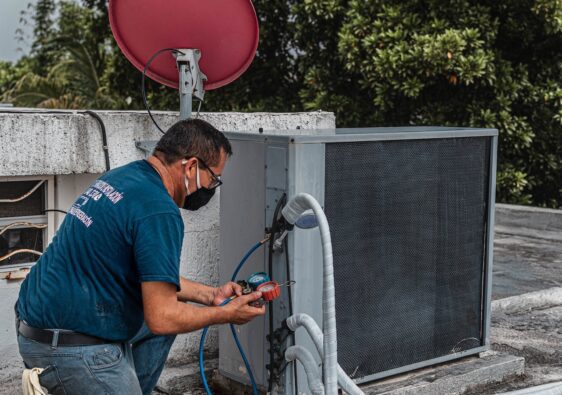Have you ever heard of sustainable living and homesteading? These may sound like hefty terms, but don’t fret, we’ll unravel these concepts together. In essence, sustainable living involves making choices that lessen our impact on the planet. Homesteading? That’s all about self-sufficiency and the rewards it brings. When we weave these two concepts together, we discover a powerful tool for shrinking our ecological footprint. Intrigued? Let’s dive in!
Understanding Your Ecological Footprint
First off, what do we mean by ‘ecological footprint’? Think of it as the mark you leave on the Earth — the sum total of resources you use and waste you produce. Each meal you eat, each mile you drive, and every light switch you flip, contributes to your ecological footprint. This makes it a powerful measure of personal environmental impact.
The Concept of Homesteading
Now, let’s hop onto our time machine and visit homesteading. It all started with a government act in the 1800s, giving settlers land to cultivate. In the modern world, homesteading has a fresh face. It’s about living self-sufficiently, whether you’re in a city apartment, a suburban home, or a rural farm.
Homesteading and Sustainable Living
Self-sufficiency means relying less on external systems and more on your own resources. That translates into fewer trips to the store (hello, fuel savings!) and less packaging waste (goodbye, plastic!). And if you’re growing your own food, you’re slashing carbon emissions from transport and industrial farming. The net result? A smaller ecological footprint!
Practical Steps to Start Homesteading
Homesteading, at its core, is about taking little steps toward a self-sufficient lifestyle. Whether you live in a small city apartment or a sprawling country estate, there are countless ways to embrace homesteading principles. Here are some practical steps to take:
1. Choosing the Right Location
Location is key, but remember, homesteading doesn’t necessarily mean moving to the country. If you’re an urban dweller, you can take advantage of balcony space or community gardens. In suburban locales, there might be more wiggle room to stretch out those green thumbs with larger gardens, or even consider raising animals.
Perhaps, with enough space, you could accommodate a large chicken tractor, allowing your chickens to forage freely while staying protected. And in rural areas? You’re looking at the possibility of larger-scale operations, such as managing livestock or cultivating large crop fields. Whatever your surroundings, the goal is to adapt and align your homesteading ambitions with your environment.
2. Starting a Vegetable Garden
Gardening is often the first step on the homesteading path, and with good reason. Producing your own food significantly reduces your dependence on grocery stores. Start small with herbs or lettuce, which are quite forgiving for beginners. Make sure to choose crops suitable for your climate and available sunlight. As you gain confidence, expand your garden, perhaps experimenting with heirloom varieties or organic methods.
3. Raising Small Animals for Food
For those with a bit more space, consider raising small animals. Chickens are a popular choice, providing both eggs and meat while helping with pest control. Rabbits are another low-space, high-yield option. If you’re in an urban area, check local regulations on keeping livestock. For those with restrictions, consider alternatives like worm composting or beekeeping.
4. Implementing Renewable Energy Solutions
Homesteading and renewable energy are a perfect match. Solar panels are the most commonly used renewable energy source for homes. Start by using solar power for smaller projects, like outdoor lighting or powering a greenhouse. As you become more comfortable with the technology, you can expand to more substantial projects. Wind and hydro power could be additional options, depending on your location.
5. Practicing Waste Reduction and Recycling
Reducing waste is a critical part of homesteading. Start a compost pile for kitchen scraps and yard waste, which can then enrich your garden. Consider ways to reuse or repurpose items instead of throwing them away. For instance, old jars can be used for storage, and scrap wood can be turned into raised garden beds. Challenge yourself to think twice before throwing something in the bin — there might be another use for it yet!
6. Harvesting and Preserving Food
As your garden starts to flourish, learning how to properly harvest and store your produce will ensure nothing goes to waste. Canning, freezing, and dehydrating are all effective methods of preservation. You can turn tomatoes into sauces or salsas, pickle cucumbers, and almost any fruit can be turned into jam. Learning these skills not only reduces waste but also provides tasty food year-round.
No matter your starting point, every step toward homesteading is a step toward sustainability.
The Challenges of Homesteading
No sugarcoating here, homesteading can be challenging. Whether it’s battling pests in your garden or navigating zoning laws for your chicken coop, hurdles do pop up. But remember, every challenge is a learning opportunity, and there’s a vibrant community of homesteaders out there to lend advice and support.
In Closing
By now, it’s clear — homesteading is a potent tool in the quest for sustainable living.
In embracing it, you’re doing more than just shrinking your ecological footprint. You’re embarking on a fulfilling journey, one that draws you into a deeper kinship with nature and instills a newfound reverence for the resources we so often overlook. Remember, even the tiniest step can cause ripples of change. So, isn’t it about time we step out of the predictable and dive into the enriching world of homesteading?
Let’s tread lightly on our beautiful planet, one homesteading practice at a time. Good luck, and happy homesteading!



